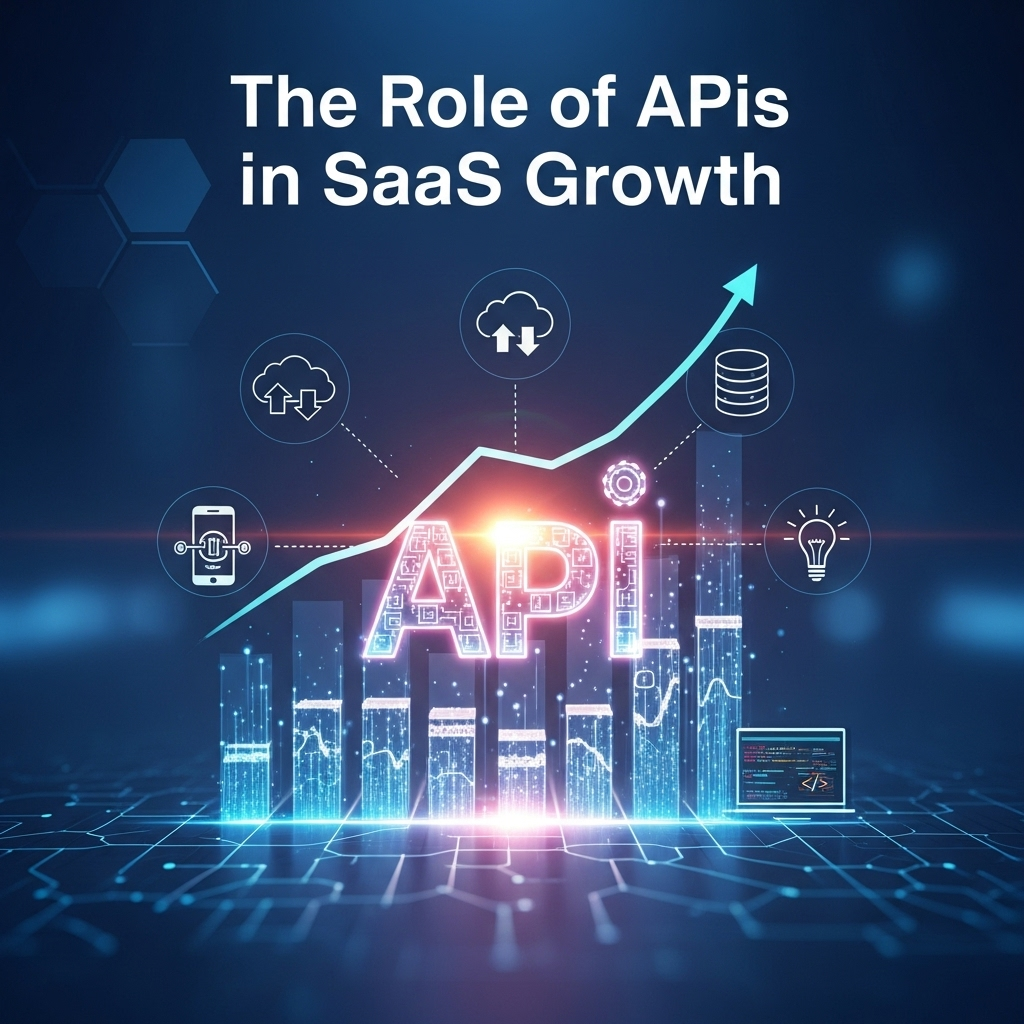In today’s hyper-connected digital marketplace, APIs have evolved from invisible technical conduits to the very heartbeat of successful SaaS companies. While US founders once treated APIs as mere afterthoughts in their product development, the most successful SaaS businesses now recognize them as strategic growth engines that directly impact customer acquisition, retention, and revenue expansion. According to recent industry analysis, companies with mature API strategies grow 2.3x faster than their peers who treat integration as an operational burden rather than a value driver. For US SaaS entrepreneurs competing in an increasingly crowded marketplace, understanding how to strategically leverage APIs isn’t optional—it’s the difference between becoming another failed startup and building a category-defining business.
This article isn’t about the technical nitty-gritty of API development; it’s about how visionary SaaS leaders transform APIs from cost centers into profit centers. We’ll explore real-world examples, actionable frameworks, and emerging trends that US-based SaaS companies are using to turn their APIs into sustainable competitive advantages. Whether you’re a bootstrapped startup founder or a growth-stage CTO, these insights will help you unlock exponential growth through strategic API implementation that resonates with American business leaders and end-users alike.

Why APIs Have Shifted from Technical Necessity to Growth Catalyst
Gone are the days when APIs existed solely to enable basic system interoperability. In today’s API-driven economy, leading SaaS companies treat their APIs as first-class products that generate significant revenue while enhancing core platform value. The paradigm shift is profound: rather than viewing APIs as developer tools, forward-thinking SaaS executives recognize them as strategic assets that expand market reach, create new revenue streams, and fundamentally reshape competitive positioning. As highlighted by api-ninjas.com, “In 2025, Application Programming Interfaces (APIs) are no longer just technical connectors; they are the strategic foundation for scalable and profitable Software-as-a-Service (SaaS) businesses.”
Consider Salesforce’s transformation—what began as a CRM platform now generates billions through its AppExchange ecosystem, powered entirely by APIs. These strategic integrations create what analysts call the “SaaS flywheel effect”: better integrations attract more users, which attracts more developers, which creates more integrations. For US SaaS companies targeting enterprise clients, this ecosystem approach has become table stakes. According to blog.api.market, “An effective API strategy is pivotal in scaling your SaaS product, driving customer retention, and creating a steady revenue stream.”
Pro Tip: Treat your API documentation like your most important sales collateral. Top-performing SaaS companies invest in developer experience (DX) teams whose sole responsibility is to create API reference materials that convert developers into advocates. Stripe’s API documentation isn’t just thorough—it’s a masterclass in strategic onboarding that reduces integration time by 40%.
How Top SaaS Companies Leverage APIs for Customer Acquisition
US SaaS companies are increasingly using APIs as acquisition channels rather than mere technical features. They accomplish this through two powerful mechanisms: ecosystem positioning and integration-led sales.
Ecosystem Positioning Through Strategic Integrations
Rather than competing solely on feature sets, leading SaaS platforms embed themselves within broader business workflows through strategic integrations. When your product becomes the invisible glue connecting critical systems in a customer’s tech stack, churn becomes nearly impossible. Take Shopify’s App Store, which features over 8,000 integrations—all powered by APIs—that transform the platform from an e-commerce solution into a complete business operating system.
The acquisition power of strategic API positioning is staggering. Companies like Figma have built their entire go-to-market strategy around Slack and Microsoft Teams integrations, allowing design teams to collaborate within existing communication workflows rather than forcing new tool adoption. This “integration-first” acquisition model reduces time-to-value and leverages the network effects of established platforms.
Integration-Led Sales Conversations
Forward-thinking sales teams now lead with integration capabilities rather than traditional feature demos. Instead of asking “What problems are you trying to solve?” they ask “Which systems would you like this to connect with?” This subtle shift positions your solution within the customer’s actual operational context from the very first conversation.
Top-performing SaaS companies maintain public integration marketplaces where prospects can instantly see compatibility with their existing tools. When a marketing executive evaluating CRM solutions sees a seamless HubSpot integration immediately available, the evaluation timeline compresses dramatically.
Pro Tip: Create “integration expectation scores” during sales qualification. Rate prospects on a 1-10 scale for how critical specific integrations are to their decision. This simple scoring system helps prioritize integration development based on actual revenue impact rather than developer preference.
Boosting Retention Through Seamless API Integrations
While acquisition gets the applause, retention writes the checks in SaaS businesses. APIs have emerged as the single most effective tool for reducing churn and increasing customer lifetime value. Consider these retention mechanics driven by strategic API implementation:
Workflow Embedding That Creates Stickiness
When your SaaS solution integrates deeply into core business processes via APIs, it becomes operationally indispensable. A study of 500 SaaS companies revealed that those with more than 15 strategic integrations retain customers at 92% after 12 months, compared to just 68% for those with fewer than five. This “embeddedness” makes switching costs astronomical—both technically and operationally.
Reduced Operational Friction Through Automated Handoffs
APIs eliminate manual data entry between systems, which directly correlates with customer satisfaction. When customer support teams don’t need to toggle between four different systems to resolve simple issues, frustration decreases and productivity increases. As noted by vallettasoftware.com, “Custom APIs and smart orchestration aren’t back-end luxuries—they’re your growth engine. They unlock automation, accelerate onboarding, and reduce the friction that slows SaaS companies down.”
The most sophisticated retention strategies use APIs to create “integration health scores” that predict churn risk. By monitoring API call volumes, error rates, and integration depth, companies can identify at-risk customers before they even consider canceling.
| Integration Depth Tier | Average Retention Rate | Implementation Complexity |
|---|---|---|
| Basic (3-5 integrations) | 72% at 12 months | Low (off-the-shelf tools) |
| Strategic (6-15 integrations) | 85% at 12 months | Medium (custom connectors) |
| Embedded (15+ integrations) | 92% at 12 months | High (API orchestration) |
Pro Tip: Implement “integration vitals” in your customer success dashboard. Track metrics like “integration adoption rate” (percentage of connected tools actively used) and “data flow volume.” Customers with below-average vitals receive proactive intervention from customer success teams.
Building an API Strategy That Drives Exponential Growth
Creating APIs for APIs’ sake leads to technical debt without business value. The most successful US SaaS companies follow a deliberate, revenue-focused API strategy framework:
Monetization Models That Work
Not all APIs should—or can—be monetized directly. Strategic SaaS leaders implement tiered monetization approaches based on API value:
- Freemium APIs: Free access to basic functionality with rate limits (e.g., 1,000 calls/day)
- Product-Led Growth APIs: Full access to drive adoption of core platform features
- Premium APIs: Advanced capabilities sold as add-ons or standalone products
- Enterprise APIs: Custom integrations with dedicated SLAs and support
“The ‘API-as-a-Product’ concept means the API itself is the core value delivered and monetized,” states api-ninjas.com. This shift requires treating your API like any other product—with dedicated product managers, roadmaps, and success metrics.
Developer-First Design Principles
Top API programs follow these non-negotiable principles:
- Consistency: Uniform naming conventions, response formats, and error handling
- Discoverability: Intuitive endpoint structures that reduce learning curve
- Self-Service: Comprehensive documentation with code samples in major languages
- Reliability: Clear SLAs with real-time status dashboards
- Security: Robust authentication and audit trails without sacrificing ease of use
Platforms like Postman, MuleSoft, and Zapier have set customer expectations that even small SaaS players must meet, as highlighted by saasroamer.com.
Technical Implementation: Best Practices for SaaS API Development
While strategy provides direction, execution determines success. These technical practices separate API programs that drive growth from those that become cost centers:
Progressive Disclosure Architecture
Structure your API program to accommodate users at different expertise levels:
- Low-code integration hub for business users (Zapier-style)
- Standard REST API for most developers
- Webhooks for real-time data flows
- GraphQL endpoint for complex queries
- Custom SDKs for enterprise implementations
This layered approach maximizes adoption across technical personas while maintaining API consistency.
Essential API Management Components
Every successful SaaS API program includes these non-negotiable elements:
- Rate limiting with tiered quotas
- Usage analytics by customer and endpoint
- Versioning strategy with deprecation timelines
- Automated testing for backward compatibility
- Developer support program with SLAs
Tools like Azure API Management provide comprehensive frameworks for implementing these capabilities without building everything from scratch, as noted by integration experts at saasroamer.com.
Pro Tip: Implement “integration health check” emails. Send customers quarterly reports showing their integration usage compared to peers. “Your Slack integration is at 72% adoption—top customers average 89%. Here’s how to increase usage…” This simple tactic drives additional feature adoption.
Future-Proofing Your SaaS with Emerging API Trends
The API landscape evolves rapidly, and US SaaS companies must stay ahead of these emerging trends:
AI-Native API Experiences
The next generation of APIs will leverage AI to create adaptive, context-aware integration experiences. Instead of rigid endpoint structures, expect natural language interfaces that understand business intent. Imagine a developer querying “Get me customers who haven’t made a purchase in 90 days with order history” and the API translating this into the precise data call needed.
Event-Driven Architecture Dominance
While REST APIs remain dominant, the shift toward event-driven architectures continues accelerating. Systems like Apache Kafka and cloud-native event buses enable real-time business workflows that transform SaaS from batch-oriented systems into true business operating platforms.
API Security as Competitive Differentiator
With rising API security breaches, SaaS companies that prioritize security will gain significant market advantage. Implementing zero-trust API security, real-time threat detection, and compliance by design will become standard expectations—not differentiators.
The companies winning the SaaS growth race aren’t necessarily those with the most features, but those with the most strategic, well-executed API programs. As emphasized by studiolabs.com, APIs are “the bridge that connects various systems, enabling data exchange, functionality, and integration” that ultimately “improve user experiences and boost performance.”
Your API Action Plan for Exponential SaaS Growth
You don’t need to overhaul your entire API strategy overnight. Implement these three steps within the next 30 days to start unlocking API-driven growth:
- Audit Your Integration Ecosystem: Map every integration against actual revenue impact. Sunset low-value connections while doubling down on strategic ones.
- Create an API Value Dashboard: Track metrics that matter to executives: integration-driven deal velocity, churn reduction from embedded workflows, and revenue from premium API access.
- Implement One Strategic Workflow: Choose your highest-value customer segment and build a seamless, API-powered workflow that solves their most painful operational friction.
The most successful US SaaS companies understand that APIs represent far more than technical plumbing—they’re strategic growth vectors that create defensible moats in crowded markets. When your solution becomes the connective tissue between critical business systems, you transcend feature-based competition and embed yourself within your customers’ operational DNA.
As the lines between products and platforms continue to blur, SaaS founders who treat APIs as strategic assets rather than technical afterthoughts will define the next generation of category leaders. The opportunity isn’t just to build another app—it’s to architect the ecosystem in which others compete. Start treating your APIs like the growth engines they are, and watch your SaaS business transform from a point solution into an indispensable platform.
